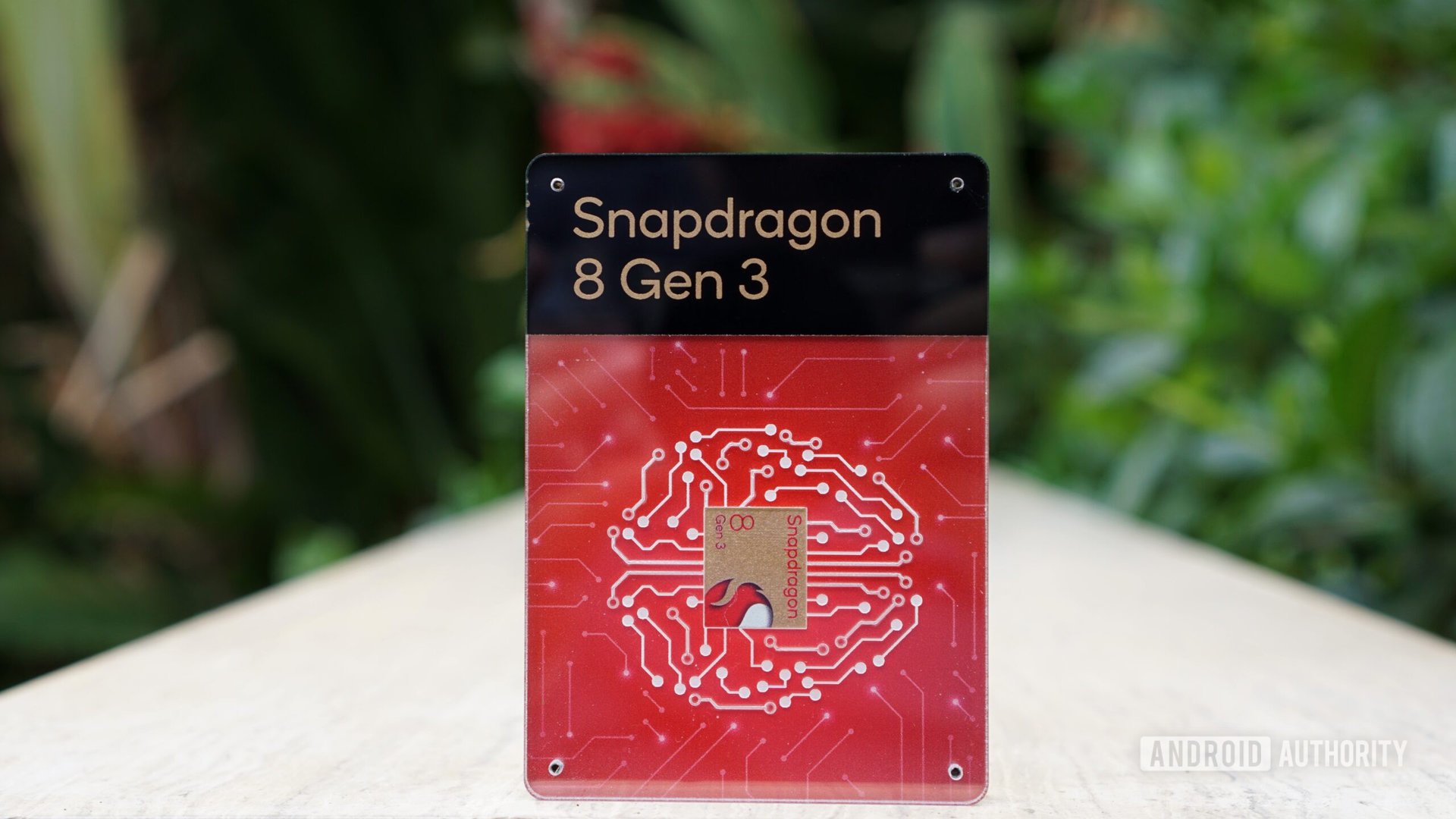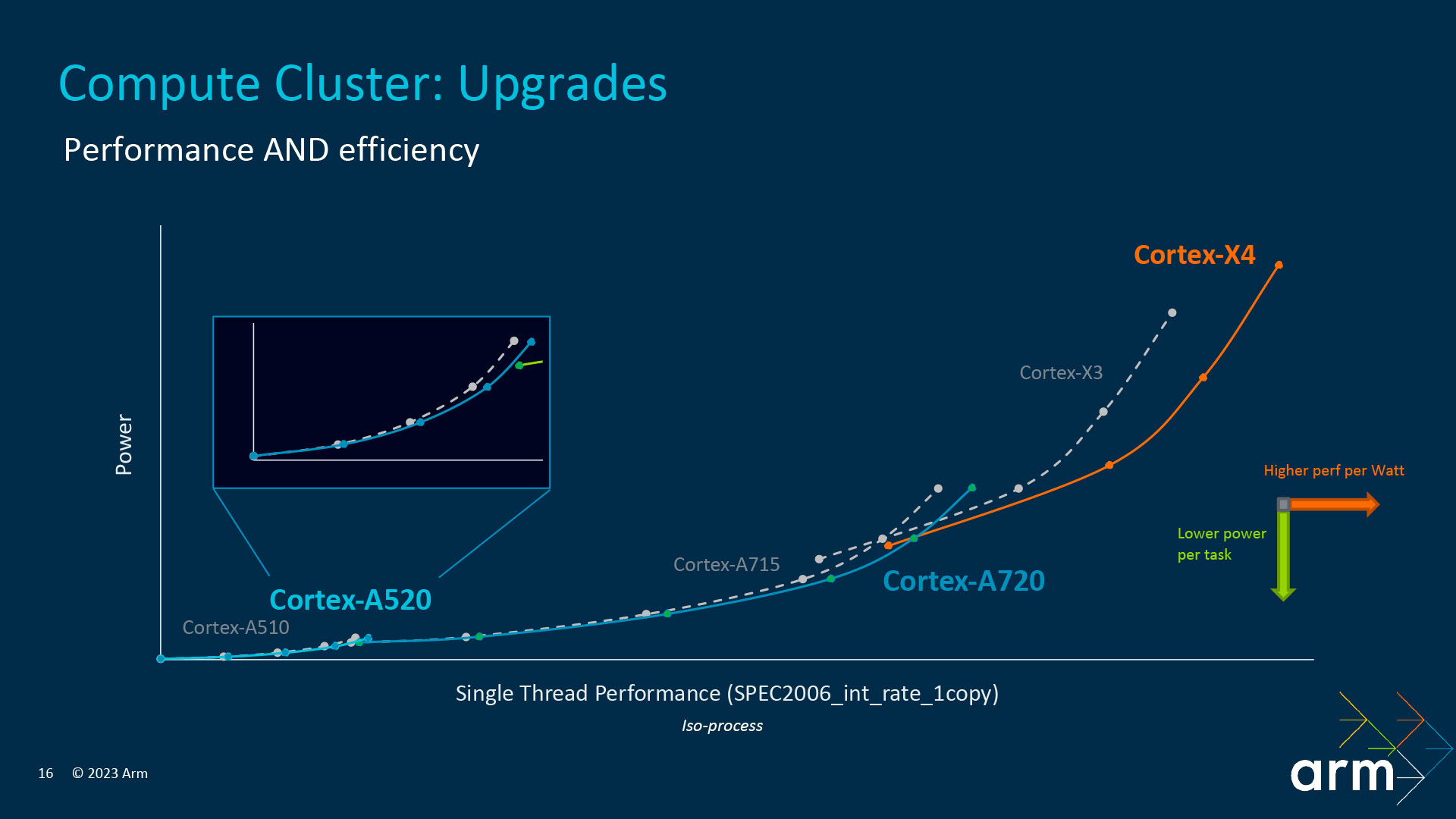Affiliate links on Android Authority may earn us a commission. Learn more.
This is why Android processors increasingly look like Apple's
Published onDecember 28, 2023

The close of another year brings us closer to the next-gen leap in smartphone processing capabilities, accelerating the latest and greatest phones to another level. The next few months are shaping up to be one of the more exciting periods in mobile chip design for a few years. We already know what Google’s AI-focused Tensor G3 and Apple’s powerhouse A17 Pro bring to the table, but the more unusual multi-core CPU designs in the new Snapdragon 8 Gen 3 and Dimensity 9300 have caught my eye for today’s discussion.
It’s been over a decade since Arm debuted big.LITTLE, mixing power-efficient small CPU cores with larger, more powerful cores in a single cluster. It’s easy to take that development for granted in the modern age of Arm DynamIQ, which allows for the mixing and matching of a greater number and variety of cores. The original aim was to balance power efficiency and push peak performance. However, the first point seems less pressing with the latest CPU cores if Qualcomm’s Snapdragon 8 Gen 3 and MediaTek’s Dimensity 9300 are anything to go by.
The 8 Gen 3 is a middle-heavy setup, with a single powerhouse Arm Cortex-X4 core, five A720 cores (split into two clock domains), and just two little A520 cores. Little cores have been on a downward trajectory at Snapdaragon; the 8 Gen 1 had four, then three in the 8 Gen 2. MediaTek’s Dimensity 9300 eschews little cores entirely and ups the ante with four Cortex-X4s paired with four A720s. Again, there’s a single highly clocked X4 for single-threaded performance, but the heavy use of lower-clocked yet wide and powerful CPU cores is by far the more interesting thing about the design.
Snapdragon has gone from four to three and now two little cores in the last three generations, replacing them with mid-tier cores.
Despite their differences, both SoCs insinuate that the bulk of your workloads will be run in these middle groups of processor cores. Powerhouse cores help out with burst and heavily single-threaded workloads, but it isn’t easy to push clock speeds much higher within the thermal limits of a smartphone, and too many huge cores would be underutilized. On the other hand, there doesn’t seem to be as much of a need for low-power cores as in previous years (Qualcomm is perhaps less convinced of this than MediaTek). Instead, Arm’s latest middle cores seem to scale well across a range of workloads, sleeping quickly for low-power tasks and clocking up for today’s multi-threaded workloads and games.
A look at Arm’s power/performance slide from its 2023 presentation helps demonstrate just how scalable the A720 is. It also points out just how much more powerful the X4 is if you need it, but remember that the X4 can scale up to PC applications, so that peak is not realized in the smartphone form factor. The A520, while clearly efficient, doesn’t cover nearly as wide a range of performance points. With major power improvements found in the latest bigger cores and the constant trickle of manufacturing efficiency gains, some chipset vendors clearly view small cores as less important.

Taking a bite out of Apple’s playbook
If this feels a bit familiar, you’ve probably cast your eye over the fence to Apple’s walled garden. The iPhone’s Bionic and new A17 Pro chips have used a seemingly common big and little core setup. However, Apple’s smaller cores have historically flown much closer in capabilities to older-generation Arm Cortex-A7 series core than the A5 range. In other words, Apple’s architecture offers two powerhouse cores for burst workloads, with four mid-range cores to handle background tasks, multi-threaded workloads, and gaming.
The latest A17 Pro epitomizes this approach. Its bleeding edge 3nm manufacturing process allows the two large cores to hit a staggering 3.78GHz when needed, while the four smaller cores are clocked much more modestly at 2.11GHz. MediaTek has a similar approach, with its conservative 2.0GHz A720s to target lower power workloads. Qualcomm’s current design is a little different, aiming for higher 3.2GHz middle-core clock speeds, but it still has the A520 cores for very low-power use cases.
Manufacturing gains and more efficient Arm CPUs are driving down the need for tiny cores.
Still, Qualcomm appears to be converging on the idea that tiny cores aren’t needed with 2024’s Snapdragon 8 Gen 4. While still almost a year away, early rumors point to two big Phoenix cores and six smaller Phoenix M cores inside the 8 Gen 4. Phoenix will be Qualcomm’s return to custom Arm-based CPUs (like Apple), enabling its engineers to tailor performance and efficiency even more to its liking (again, just like Apple). At least in theory. It’s possible Qualcomm simply doesn’t have three tiers of cores developed just yet.
With that in mind, we don’t know the makeup of Qualcomm’s future custom cores. But looking at the direction of travel, it seems highly likely that the six middle cores will target mid-tier performance, rather than ultra-low power, to keep the setup competitive with Apple and Arm Cortex offerings. If that’s the case, the 8 Gen 4 will look pretty Apple-eqsue, albeit with a higher core count that could lend it a multi-core performance win for the first time.
… but why?

This all leads us to the question: why is the Android SoC market pivoting yet again, and does any of this really matter for our smartphones?
As we mentioned, the why can likely be explained by the ever-improving efficiency of Arm CPU cores combined with smaller (but more expensive) manufacturing processes that have lessened the need for low-power CPU cores that almost exclusively handle background tasks. For example, MediaTek claims its bulkier-looking architecture saves 10-15% on power for typical workloads over the previous generation, mostly by being faster to return to sleep.
Speaking of workloads, engineers at Arm have keenly explained to us the importance of the middle core in recent years. Big cores are great for loading your applications, but you want a better balance of responsiveness versus efficiency when scrolling through Facebook and replying to messages. Most of our daily mobile workloads sit somewhere between peak and minimum power states. Even the latest mobile games, which you might think require powerhouse CPUs, actually run predominantly on those middle cores. Chipsets like the 8 Gen 3, A17 Pro, and Dimensity 9300 are just designers optimizing their SoCs for the most common mobile workloads.
Emerging use cases continue to demand more performance from our limited phone batteries.
For consumers, these changes should result in better performance without sacrificing battery life for the above reasons. While we might view today’s smartphones as already more than sufficient for our day-to-day, emerging use cases require yet more performance from a form factor with very limited battery life. AI is 2023’s tech buzzword, but running on-device AI models is a daunting task that requires more memory and processing power. Hence Qualcomm, Google, and others are keen to play up their NPU number-crunching capabilities that augment typical CPU power. The lure of AAA gaming is another area that requires better graphics capabilities and performant yet efficient CPU cores to handle physics, logic, and to feed the GPU. Apple raised the bar with console games on the iPhone 15 Pro, and Android won’t want to be left behind in the coming years.
The trusty CPU is the glue that binds these capabilities together. With performance demands on the rise yet no more battery life or thermal headroom to be found, it’s perhaps not surprising that the finely balanced middle core is playing an increasingly important role in modern smartphone SoC development.